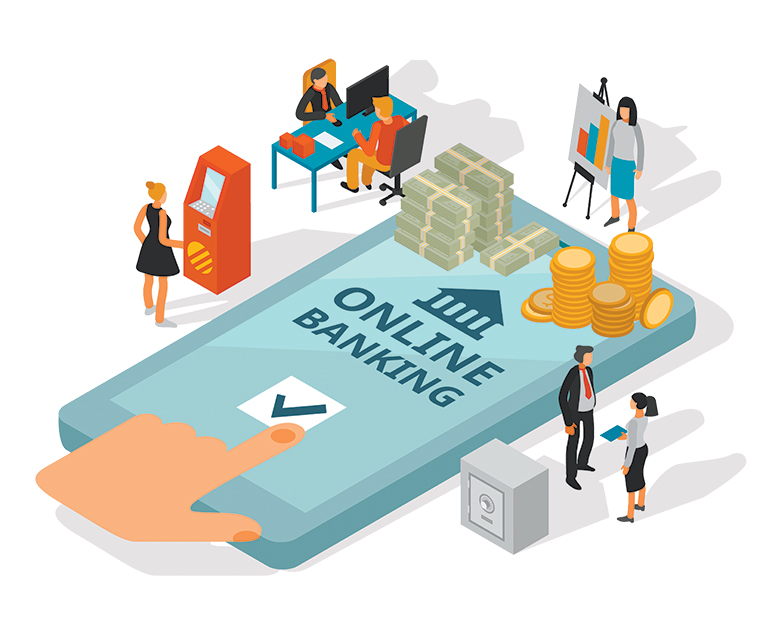




Policy Rate Updates: Double cut finale
 DOWNLOAD
DOWNLOAD

Monthly Economic Update: One for the road
 DOWNLOAD
DOWNLOAD

Inflation Update: Still low, still slow
 DOWNLOAD
DOWNLOAD


Digital lenders unlikely to shake up PH banking industry

Digital banks in the Philippines might be unable to compete strongly against lenders with brick-and-mortar presence in the medium term, Fitch Ratings said on Monday.
In a commentary written by Tamma Febrian and Willie Tanoto, directors of its Asia-Pacific banking team, the debt watcher said the Philippines offers “significant potential” for digital banks because of its large unbanked population.
“(But) we do not believe it will shake competitive dynamics within the Philippine banking sector significantly in the medium term. We expect their impact on the ratings of Fitch-rated banks will be limited,” it added.
In 2021, the Bangko Sentral ng Pilipinas (BSP) capped the number of digital banking licenses to six to monitor the development of the sector, ensure competition, and boost its regulatory capacity.
The six online lenders that got licenses to operate in the country were Tonik Digital Bank, Inc.; GoTyme of the Gokongwei group and Singapore-based Tyme; Maya Bank of Voyager Innovations, Inc.; Overseas Filipino Bank, a subsidiary of Land Bank of the Philippines; UNObank of DigibankASIA Pte. Ltd.; and UnionDigital of Union Bank of the Philippines, Inc.
Despite rapid growth in the past two years, the market share of system deposits of all digital banks was still less than 0.4% as of end-June, according to Fitch Ratings.
Low average deposits per customer also suggest that digital lenders have yet to capture most of their depositors’ operating accounts, the debt watcher said.
“We expect digital banks will continue to compete aggressively for deposits over the next two years as they seek to refine their business models and build the scale necessary for sustainable operations,” it said.
Fitch noted that most digital lenders compete with pricing to attract new customers. However, this has become more difficult due to the higher interest rate environment.
“We believe that this pricing-focused strategy is unlikely to be sustainable in the long run, though it should support continued expansion of the digital bank segment over the next two to three years,” Fitch said.
Digitalization has also allowed easier account-switching and clients tend to move deposits quickly when promotional rates run out, it said. Digital banks, especially those that compete solely on pricing, may not be able to retain customers for long.
“We believe those digital banks that are backed by established corporates with complementary business lines and extensive customer bases will enjoy a competitive advantage relative to other digital peers in the longer run and are likely to enjoy stronger growth in the near to medium term,” Fitch said.
The debt watcher also said that high funding costs influence online lenders’ risk appetite, which encourages lending to higher-yielding but higher-risk segments such as unsecured personal and small- to medium-sized enterprise (SME) loans.
“This should help the banks maintain positive credit spreads, though we expect most digital banks to continue to make a loss in the near term due to high credit costs and sustained investments as they build their franchises and expand their customer base,” it said.
The BSP raised borrowing costs by 450 basis points from May 2022 to October 2023, bringing the benchmark interest rate to a 16-year high of 6.5%.
“Retail-loan quality in the Philippines has historically been more volatile and weaker than that for corporate loans, and we believe digital banks will face a difficult challenge in managing their retail-loan risks — in light of their focus on higher risk segments and the underbanked population,” Fitch said.
Based on the latest BSP data, the total nonperforming loan (NPL) ratio of digital banks stood at 8.5% as of September, significantly higher than the 3.4% NPL ratio of the whole Philippine banking system.
“(Digital banks’) weaker asset quality has weighed on their profitability, with impairment charges equivalent to more than 40% of revenue in the first nine months of the year,” Fitch said.
BSP data also showed that digital banks’ return on assets stood at -2.73% as of end-September, equivalent to an annualized net loss of PHP 2.25 billion.
Meanwhile, the total assets of the digital banking group were at PHP 82.29 billion in the first nine months of the year.
“Robust economic growth prospects for the Philippines should provide some support to borrower-repayment capacity and asset quality in 2024-2025 for both digital and incumbent banks,” Fitch said.
The debt watcher sees the Philippine economy growing by 6.3% on average over the medium term.
“This could improve the prospects for digital banks to achieve profitability and operational sustainability, it said. However, we believe the nature of digital banks’ loan books and customer base means they will be more exposed if there is an economic shock outside of Fitch’s baseline assumptions.”
In November, Fitch Ratings affirmed the Philippines’ investment grade rating at “BBB” and maintained its “stable” outlook, citing the economy’s strong medium-term growth prospects. — By Keisha B. Ta-asan, Reporter
This article originally appeared on bworldonline.com





 By BusinessWorld
By BusinessWorld